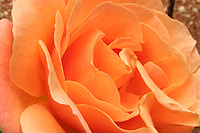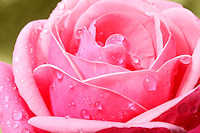Some Thoughts On Planting Roses
Author: Marie K Fisher
 Although all kinds of gardening is my passion in life,
nothing but nothing gives me greater pleasure than my
beautiful rose garden. They are just so stunning, and I do
really love the colors and the amazing varieties which are
available.
Although all kinds of gardening is my passion in life,
nothing but nothing gives me greater pleasure than my
beautiful rose garden. They are just so stunning, and I do
really love the colors and the amazing varieties which are
available.
To get the best from your rose garden however there are quite a few important pointers to bear in mind, and I would like to share some of these with you.
When the spring comes and the ground is thawed it is time to start planting your rose garden. Roses have actually been a cherished aphrodisiac since biblical times, and have been around for over 3000 years. Despite this, they still hold a particular mystery and fascination, not to mention the fact that they look and smell fantastic.
One of the most important rules of growing roses is to plant the rose bush in an area that receives around 4 to 6 hours of sunlight every day. It is also advisable not to plant too many trees or other plants around the rose bush, because many of these are likely to either mix with the rose or stifle it's growth. If you are replacing an old rose bush, approximately 1-1/2 cubic feet of old soil should be removed, and fresh soil added to replace it. When positioning your rose in the garden or landscape, make sure that you consider the growth characteristics of the rose in question.
To give you an example, place climbers and ramblers along fences, trellises, or next to arches or pergolas. This location offers them unrestricted growth and greatly increases the potential for some superb looking blooms.
Roses also look really beautiful in island beds mixed in with perennials, and miniature roses make great edging plants in front of the taller varieties. If you plant them singly, shrub roses can make excellent specimen plants, or they can be clustered to make a flowering hedge. You can also use them to camouflage unsightly parts of your garden.
Dig a hole large enough for the root mass, and loosen the bottom of the hole. I suggest that you should also add some bone meal which is a slow acting source of phosphorus. This leads to healthy root growth in the rose plant.
The plant should then be placed in the hole very carefully and the hole refilled with soil, making sure that the roots are properly covered. Water the rose plant well, and let it absorb the water before applying the final covering of soil. When this has been completed, water the plant some more and create a mound of soil about 6 inches high. The dome will keep the stems from drying out until the plant is rooted. Gradually remove the excess soil as the leaves start to open.
Special care should be taken with the planting depth, which varies considerably according to the climate you live in.
 If you live in a colder area, plant a bit deeper and
consult with other people growing roses in your area. If you
are buying potted roses, you should plant them about 1 inch
deeper than their potted level. The best time to plant roses
varies depending on the winter temperature.
If you live in a colder area, plant a bit deeper and
consult with other people growing roses in your area. If you
are buying potted roses, you should plant them about 1 inch
deeper than their potted level. The best time to plant roses
varies depending on the winter temperature.
Where temperatures don't drop below -10 degrees F in either fall or spring, planting is satisfactory. If you live in an area where winter temperatures drop below -10 degrees F, spring planting is preferable. Plants should be planted in a dormant condition if purchased bare root, but container grown plants may be planted throughout the growing season.
Spacing of the rose plant is highly influenced by the temperature. In regions where winters are severe, the rose plant does not grow so large as when in mild climates. Taking this into consideration, hybrid tea roses should be spaced 1-1/2 to 3 feet apart, but large vigorous growers such as hybrid perpetuals will need 3 to 5 feet of space, while the climbers need from 8 to 10 feet of space.
If the winter temperature is below 10 degrees F, roses can grow healthily if proper care is taken, so the gardener must be prepared to endure that cold and probably wet experience. In colder areas, roses enjoy their last fertilization of the season by August 15th or thereabouts.
These few pointers will help to ensure that your roses grow well, and bloom nicely all summer long.
I would also like to share with you a few important additional thoughts on how you can avoid the diseases which can attack your roses.
To make sure that your most prized roses are in the pink or
even red of their health, simply follow these tips on dealing
with the most common rose health problems.
Black Spots On Leaves
This disease is commonly known as black spot. Black spots
appear as circular with fringed edges on the leaves, and they
cause them to yellow. The solution is to remove the infected
foliage and pick up any fallen leaves around the rose.
Artificial sprays can be used to prevent or treat this kind of
rose disease.
Stunted Or Malformed Young Canes
Known as powdery mildew, this is a fungal disease that
covers leaves stems and buds with wind spread white powder. It
makes the leaves curl and turn purple. Spray with Funginex or
Benomyl to treat this particular disease which could totally
ruin your rose garden.
Blistered Underside Of Leaves
A disease of roses known as rust, it is characterized with
orange-red blisters that turn black in fall. In spring it will
attack the new sprouts, and this disease can even survive the
winter.
What you should do is to collect and discard leaves that are
infected in fall, and also spraying Benomyl and Funginex every
7-10 days will help.
Malformed Or Stunted Leaves And Flowers
The one most likely cause of this is the presence of spider
mites. These are tiny yellow red or green spiders which cling
to the underside of the leaves. They will suck the juices from
the leaves, but the application of Orthene or Isotox may help
in treating this infestation.
Weak And Mottled Leaves Showing Tiny White Webs Underneath
This might be caused by aphids, which are small soft-bodied
insects which are usually brown green or red. Often found
clustered under leaves and flower buds, they suck plant juices
from tender buds. However Malathion or Diazinon spray may help
roses to survive these bugs.
Flowers That Do Not Open Or Are Deformed When They Do Open
Thrips could be the reason behind this deformation and unopened flowers, which is characterized with slender brown-yellow bugs with fringed wings thriving in the flower buds. They will also suck the juices from the flower buds, so therefore you should cut and discard all infested flowers. Using Orthene and Malathion will also treat this health problem with your roses.
I do hope that the information I have given you regarding the diseases that you can find in roses will prove very helpful in making your rose gardening more rewarding and fruitful.
Marie K Fisher is an avid gardening enthusiast with a passion for exotic flowers and wonderful colors. She is a regular contributor to Garden Center Showplace a leading online Garden Center. For more details of the superb range of products offered, and also more Featured Articles and Tips on Gardening visit www.gardencentershowplace.com





